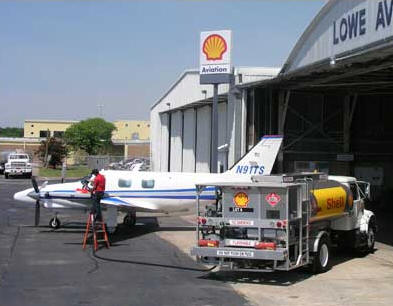
 |
|
||
|
TIME IN YOUR TANKS How to determine the "Time In Your Tanks" Maintain accurate flight time, power setting, and refueling records for each trip. Be conservative, figure your flight time from start up to shut down. Reasonably accurate fuel consumption rates (in gallons per hour) can be computed after a few flights under similar operating conditions. The amount of usable fuel for your aircraft may be found in the Pilot's Operating Hand book. Multiply the usable fuel on board your aircraft by 75 percent and divide the result by your previously confirmed consumption rate. This will be your SAFE FLIGHT TIME limit for the aircraft. Resolve never to exceed it. When you are familiar enough with your air- craft to know exactly how much time is in your tanks, plan to land with at least 45 minutes of reserve fuel on board. Anything less could compromise safety. Other TIPS ON FUEL MANAGEMENT a. Compute a reasonable time limit for your air- craft. |
 |
Factors to be considered in planning each flight
Trip length.
Cruise Altitude.
Wind-don't count on forecast tailwinds, they can change.
The number of passengers (weights plus baggage).
Inflight endurance of persons on board. c. Resolve not to exceed the time limit you establish.
d. Estimate your "ETA" for each checkpoint.
Be aware of your actual progress and think about landing at an alternate if you are running behind your estimated "ETA."
e. Use the grade of aviation gasoline specified by the manufacturer for your aircraft. Use the next higher grade when the specified grade is not available.
f. Never use automotive gasoline or aviation gasoline of a lesser grade than that specified by the engine manufacturer.
g. Visually check the color and cleanliness of the fuel in your aircraft by draining the fuel sumps and strainers after each fueling and during preflight inspection.
h. Do not assume your fuel quantity and quality to be correct. Check it.
i. Know the fuel system of your aircraft and never operate a system selector without visually checking the position.
j. Fuel gauges are subject to malfunctions and errors. Therefore, unless restricted by the gross weight or center of gravity limits, it is considered good judgment to "top off" the tanks at fuel stops. If the fuel load must be limited, an accurate measurement can be made by use of a dipstick calibrated for the aircraft.
k. Condensation occurs in partially filled tanks when not in use. Filling the tanks at the completion of the trip will reduce the probability of fuel contamination by condensation.
I. Do not reposition the fuel selector just before takeoff or landing.
m. Know why you should lean the fuel mixture:
To improve engine efficiency and increase airspeed.
To provide smoother engine operation.
To provide greater fuel economy and longer range of operation-That's a safety factor.
To provide longer spark plug life with less fouling.
To reduce maintenance costs.
Know when you should lean the fuel mixture:
Normally aspirated engines
Lean any time the setting is 75 percent or less. Use full rich for full throttle operation at 5,000 feet density altitude and below.
2. Turbocharged engines:
Always use full rich for takeoff regardless of altitude.
lean at cruise as recommended by the manufacturer only.
o. Know how to adjust mixture setting for high altitude takeoff and landing.
Lean to maximum RPM for carburetor engines.
Lean to proper fuel flow and fuel pressure setting for injected engine:
Lean before entering the traffic pattern to ensure maximum power for go around.
p. Enrich the mixture for descent as required ONLY.
Enrich enough to keep the engine running smoothly.
Go to full rich when in the traffic pattern (or as required when landing at high elevations).
REMEMBER- "A TANK FULL OF FUEL IS ONLY A TANK FULL OF TIME"
| ?AvStop Online Magazine Contact Us Return To Technical Stories Of Interest |